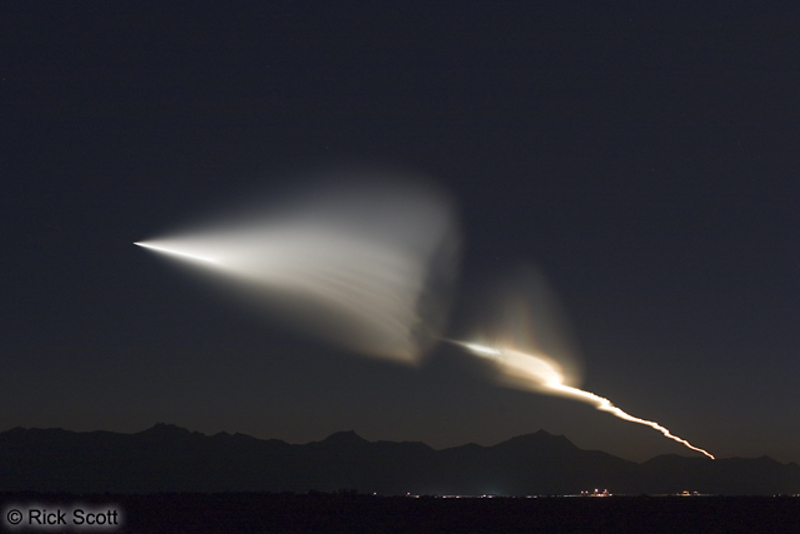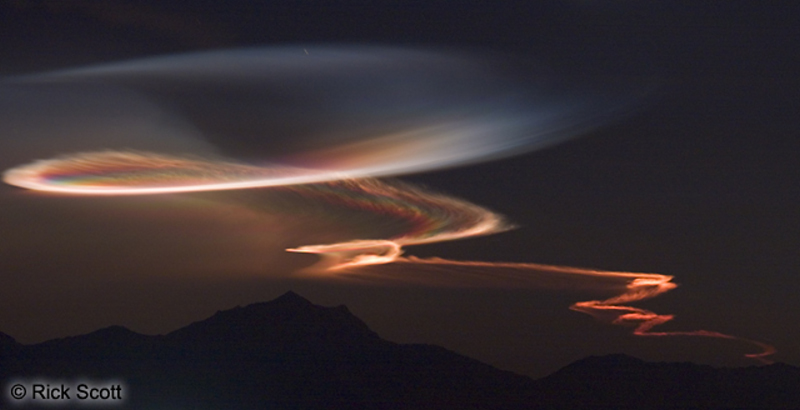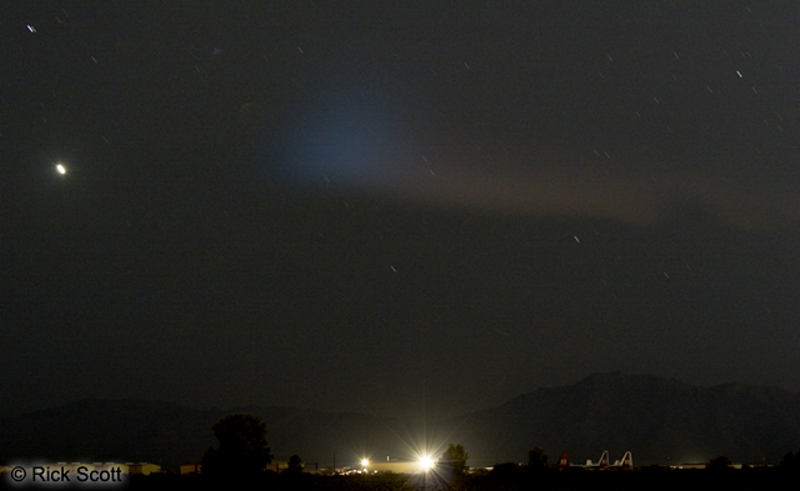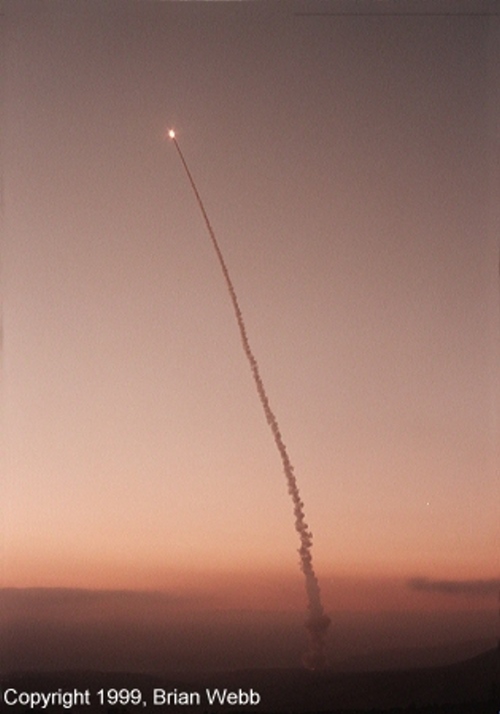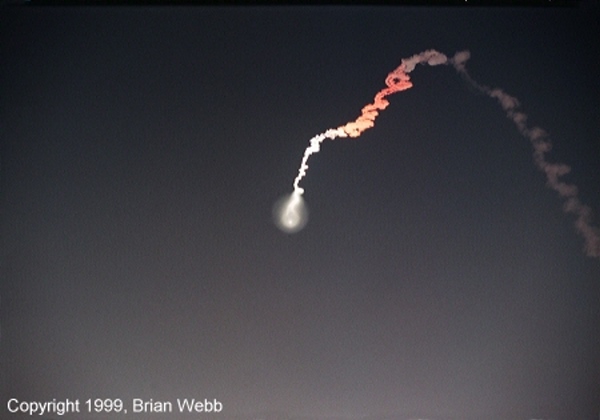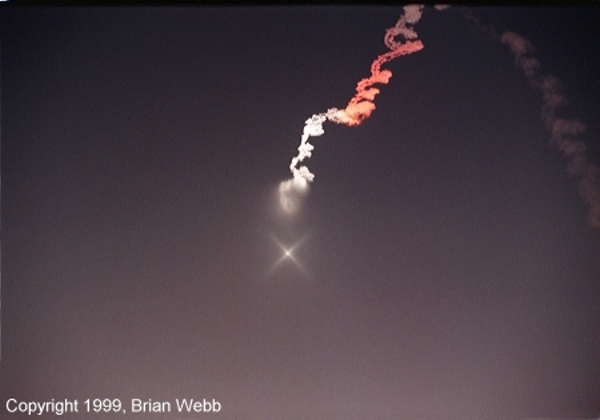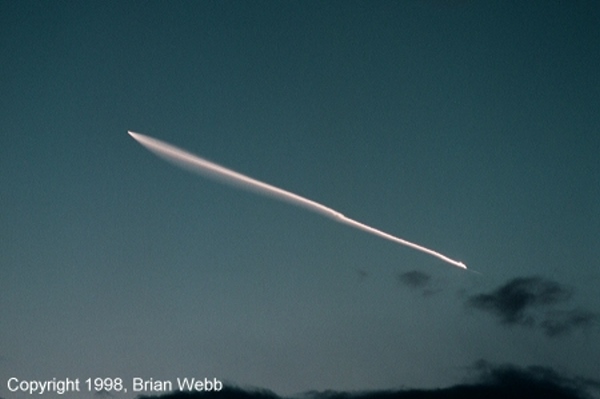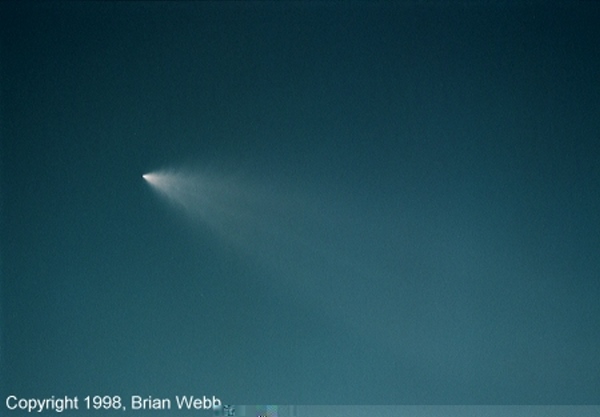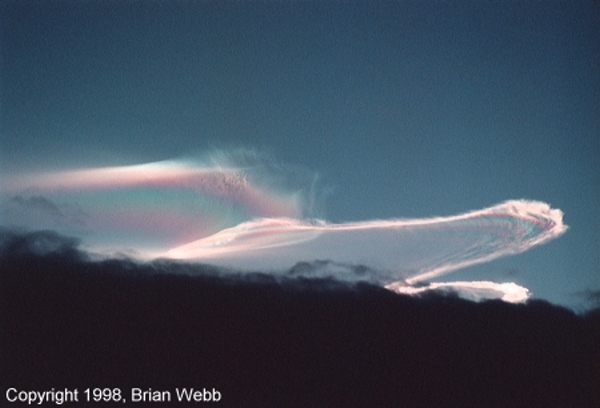|
The UFO Files False UFO Sightings |
||||
|
September 22, 2005
"This was a way awesome event!" I had no idea what a sight this launch was going to be. It's the first launch from Vandenberg AFB in California I've seen and I just didn't know what to expect. I wasn't sure if I'd be able to see the lower launch trail which was surprisingly bright, then it disappeared for a couple of seconds and then the second stage lit up. After the rocket was lost to sight, the plume from the second stage quickly grew to a very large diffuse glow that filled the sky from the horizon to about 15 degrees up and about 25 or more degrees wide with a brighter streak through the middle where the rocket had passed. As more time passed, the plume from the 1st stage evolved into a giant growing corkscrew that lasted longer than I expected and was still a great object to photograph after it was barely visible my eyes. The bottom photograph seen above is the last of the plume at the location where the engine was shut down. It was visible as a slightly blue glow to the right of Venus which is the very bright short streak near the left edge of the photograph. Photographer: Rick Scott
SOURCE: Rick Scott's Natural Images |
||||
|
September 22, 2005 |
||||
|
September 22, 2005 |
||||
|
May 20, 2006
These photos capture the 1999 October 2 dusk launch of an MSLS (Multi-Service Launch System) missile from Vandenberg AFB. The modified Minuteman II sent an unarmed reentry vehicle (warhead) and balloon decoy to the central Pacific as part of the Integrated Flight Test 3 (IFT-3) missile defense test. An anti-missile interceptor vehicle later successfully intercepted the warhead. All images were taken by Brian Webb from Vandenberg AFB while covering the test for public radio
and shows the early stages of the expansion of exhaust plume.
Source: Brian Webb - Copyright © 2003-2006 All rights reserved |
||||
|
May 21, 2006
Photos of the 1998 April 1 dusk launch of a Pegasus XL rocket carrying NASA's TRACE (Transitional Region and Coronal Explorer) satellite from California's central coast. An L-1011 jumbo jet carried the Pegasus XL from Vandenberg AFB to the launch point southwest of Monterey and released it at a height of about 39,000 feet above the Pacific Ocean. The vehicle successfully placed TRACE into orbit. These photos are good examples of the Twilight Effect, a phenomenon that occurs when a rocket or missile is launched after sunset or before sunrise and the exhaust plume is illuminated at high altitude by the Sun. This series of photos was taken by Brian Webb from TV Hill near the KEYT-TV studios in Santa Barbara, California.
At this point the plume looked like a Christmas tree and had fine, feathery internal detail.
Source: Brian Webb - Copyright © 2003-2006 All rights reserved |
||||
| FAIR USE NOTICE: This page contains copyrighted material the use of which has not been specifically authorized by the copyright owner. Pegasus Research Consortium distributes this material without profit to those who have expressed a prior interest in receiving the included information for research and educational purposes. We believe this constitutes a fair use of any such copyrighted material as provided for in 17 U.S.C § 107. If you wish to use copyrighted material from this site for purposes of your own that go beyond fair use, you must obtain permission from the copyright owner. | ||||
|
|
